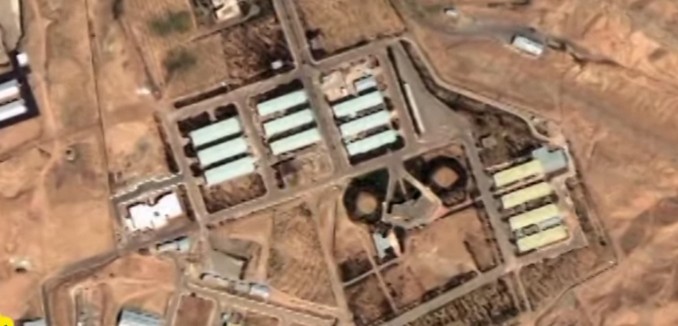Satellite imagery shows that Iran has continued asphalting a site where it is believed to have carried out testing necessary for detonating a nuclear bomb, according to a report yesterday from the Institute for Science and International Security. The military facility in Parchin has long been an issue of concern during negotiations over Iran’s nuclear program.
The report (.pdf) reads:
More recent Digital Globe satellite imagery dated January 31, 2015, shows signs of external activity at the northern section of the site and the absence of most of the material/debris and the dirt/water runoff by the main building … In front of the large building in the north end of the site, another building of interest to the inspectors, imagery shows the presence of gravel or recycled asphalt. These signatures are consistent with activities of resurfacing that are usually undertaken prior to the lay-down of new asphalt. It is, therefore, possible that Iran is engaging again in asphalting activities in the northern portion of the Parchin site.
The report speculated:
Iran may also be repurposing this site. It did this in 2003 and 2004 when it leveled and scraped the site of the Physics Research Center at Lavisan-Shian, which was linked to military nuclear work, and then converted the site into an athletic center. At some point, Iran may try to argue that the “remodeled” Parchin site is dedicated to some other activity, perhaps also occurring at nearby sites.
Iran is believed to have carried out exploding bridge wire (EBW) experiments at Parchin. An EBW has a number of applications, including as a trigger for a nuclear explosion. Iran has long been obligated to explain the possible military dimensions of its past nuclear research to the International Atomic Energy Agency (IAEA).
The November 2013 Joint Plan of Action (.pdf) agreement between Iran and the West required the Islamic Republic to provide “specified information to the IAEA, including information on Iran’s plans for nuclear facilities, a description of each building on each nuclear site, a description of the scale of operations for each location engaged in specified nuclear activities, information on uranium mines and mills, and information on source material.” Iran has argued that Parchin is a military site, not a nuclear site, and has refused to allow the IAEA to inspect the section of Parchin in question.
Because Iran has not been forthcoming about Parchin or any of its past nuclear research with the IAEA, the agency’s director, Yukiya Amano, said last month that he could not confirm that “all nuclear material in Iran is in peaceful activities.”
In October of last year, a mysterious explosion at Parchin once again raised suspicions about the possible nuclear work done at the installation.
[Photo: JewishNewsOne / YouTube ]




